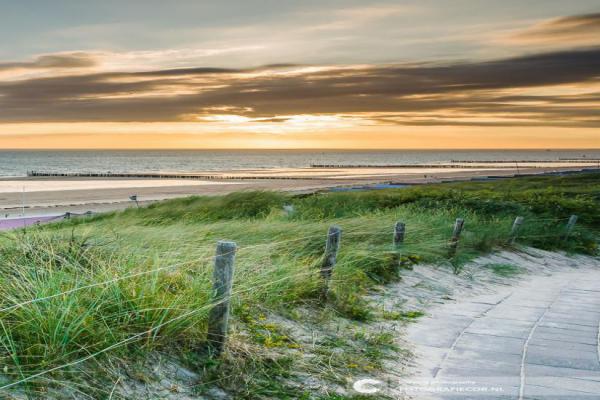Surroundings
Zeeland is a province in the south-west of the Netherlands. Zeeland borders on the Dutch provinces South-Holland and North-Brabant and the Belgian provinces West Flanders, East-Flanders, and Antwerp. Zeeland has more than 380,000 inhabitants and a governing center. The largest town in the province is Middelburg.
Throughout the years, agricultural Zeeland has maintained its own cultural identity. Zeeuwse traditional clothing is famous around the country and is still worn by older women and during special occasions today.
The farmers on Walcheren maintain the tradition of ‘ringsteken’. During ringsteken (festive day in August), people riding a (Zeeuwse) horse attempt to place a lance through a ring.
Local products (such as the 'boterbabbelaars’ and the ‘bolussen’) are strongly associated with Zeeland and are enjoyed by many tourists. Local dialects (see above) are also part of the Zeeuwse cultural heritage. Furthermore, the province is strongly associated with the Dutch Reformed Church.

The Delta Works
The Veerse Gatdam from 1961 (part of the Delta Works) connects Walcheren with Noord-Beveland. The former Veerse Gat is today known as the Veerse Meer. It is a popular water sports area and attracts many tourists every year.
Since the construction of the Veerse Gatdam, the harbor of Veere is no longer connected to the sea. This meant that the fishing fleet had to move away from Veere. However, because of the construction the dam, the coastline has significantly been shortened, which in turn strongly reduces the risk of Walcheren flooding.

Westkapelle
Westkapelle is famous for its lighthouse – referred to as the “Hoge Licht” (‘High Light’), “Zuiderhoofd”(‘Southern Head’) or Westkapelle Hoog (‘Westkappelle High’) - which is visible upon arrival in the town. The tower is the remains of a Gothic church, damaged by fire in the 18th century. In the 19th century a beacon was built on top of it so that it could function as a lighthouse. Unusual for a lighthouse is the fact that it is not located on the sea side but on the landside of the town.
A second lighthouse is situated on the sea dyke on the southern side, the so-called “Ijzeren Torentje” (‘Iron Tower’) or ‘Westkapelle Laag’ (‘Westkappelle Low’). Both lighthouses together form a light line to guide shipping in the Oostgat towards Westerschelde. Westkapelle Hoog also forms a red light line with Lichtopstand Zoutelande for ships from Vlissingen.
Westkapelle also has a windmill, the Noorman. It is the only windmill to have survived the war.
Another place of interest is the Westkappelse Zeedijk, a five meter long sea defense wall made of basalt stone in the row of dunes, which protects Walcheren against the water. For the Delta Works, this was the number one symbol of the Dutch fight against water.
The Polderhuis Westkapelle houses the Dyke and War Museum, located in a former water board building.

